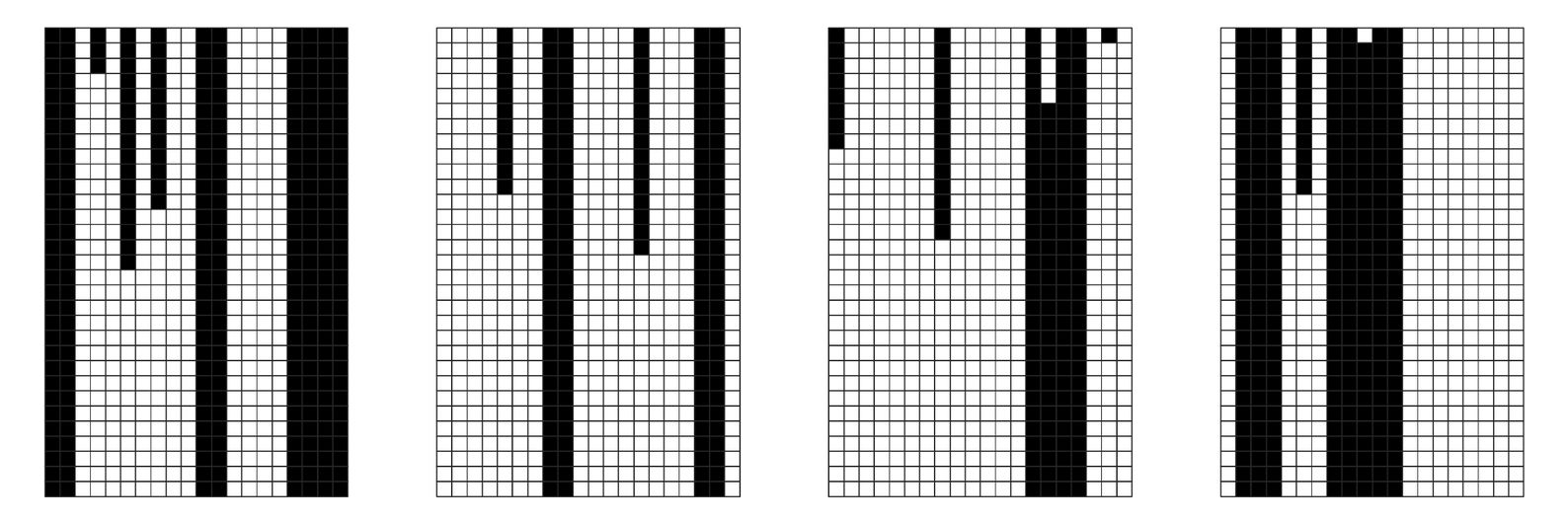remarkably poor: instead of steadily evolving to all black or all white, the system quickly gets stuck in a state that contains regions of different colors.
And as it turns out, this kind of behavior is not uncommon among iterative procedures; indeed it is even seen in such simple cases as trying to find the lowest point on a curve. The most obvious iterative procedure to use for such a problem involves taking a series of small steps, with the direction of each step being chosen so as locally to go downhill.
And indeed for the first curve shown below, this procedure works just fine, and quickly leads to the lowest point. But for the second

Results of four tries at applying an iterative procedure to find configurations which satisfy the simple constraint that every square should be the same color as the square to its right. (The squares are assumed to be arranged cyclically, so that the right neighbor of the rightmost square is the leftmost square.) The procedure starts from a random configuration of squares, and then at each step picks a square at random, then reverses the color of this square whenever doing so reduces the total number of squares that violate the constraint. The only configurations that ultimately satisfy the constraints are all white and all black. But the procedure gets stuck long before it reaches these configurations. The problem is that for any block more than one square across changing the color of a square at either end will not reduce the total number of squares that violate the constraint. And as a result, such blocks remain fixed and cannot disappear.

Three examples of curves. In the first case, the most obvious mechanical or mathematical procedure of continually going downhill will successfully lead one to the lowest point. But in the other two cases, this procedure will usually end up getting stuck at a local minimum. This is the basic phenomenon which makes it difficult to find patterns that satisfy constraints exactly using a procedure that is based on progressive improvement. The third picture above is a representation of the kind of curve that arises in almost all discrete systems based on constraints.



